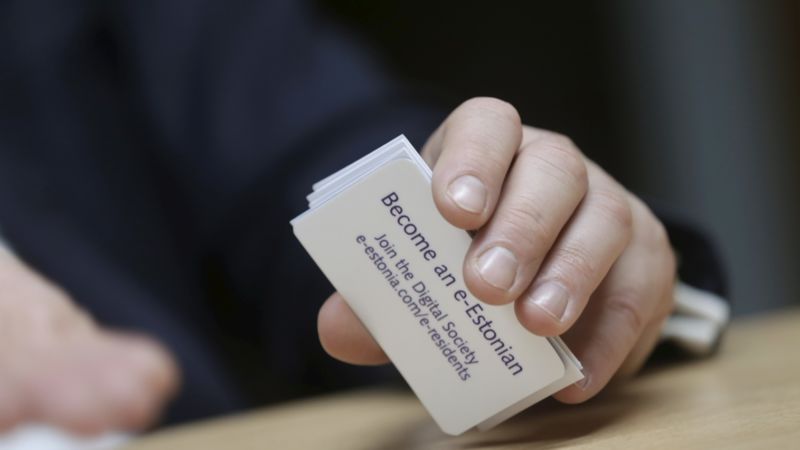Twice in the last six months, I’ve had the opportunity to visit Estonia to attend two separate conferences (Latitude59 and the Future of Identity). Both trips provided me with insight into how emerging technologies and governmental policies can enable digital transformation for a country and its citizens, as well as the potential for advanced digital identity systems.
But first, a little background on Estonia
Estonia is a small country with a long history dating back to 9000 B.C. From the Middle Ages to the modern period, Estonia was ruled by various nations until in 1991, the Republic of Estonia was formed as an independent nation. Then, in 2004, Estonia joined the EU and in 2011, it joined the Eurozone and adopted the Euro.
With its restored independence, Estonians and the government of Estonia recognized an opportunity to build a nation differently — with a mindset and approach grounded in long-term sustainable innovation and the adoption of emerging technologies. The result is e-Estonia — a governmental offering, a mindset, a guide for policy setting, and a way of life.
The potential of digital identity
One representative manifestation of e-Estonia is its digital identity system – managed through the Estonia ID card and mobile ID for Estonian citizens. In a nutshell, the Estonia ID card is a cryptographically secure digital identity card (powered by a blockchain-like infrastructure on the backend) that allows an Estonian to access public services, financial services, medical and emergency services as well as to drive, pay taxes online, e-vote, provide digital signatures, and travel within the EU without a passport. (You can check out the digital services enabled by Estonia ID here.)
Think of the Estonia ID card as a replacement for the 10+ cards (paper and plastic) you may have in your wallet: driver’s license, passport, student card, credit and debit cards, insurance policy cards, subway passes, and more.
Digital identity ambitions
In the last two years, the government of Estonia also has rolled out e-Residency, a transnational digital identity for any non-Estonians and non-residents of Estonia in the world. With e-Residency, an individual can establish a location-independent online business registered in Estonia and with access to digital services similar to those accessible by Estonian citizens and Estonia-based businesses.
The ambition of the e-Residency program is big. The vision is to provide secure and effective digital services for global citizens who are global investors, entrepreneurs, students, freelancers, developers, and others. Today, the government of Estonia is creating the digital services, but is inviting developers to build additional services to extend this digital identity platform. And as expected, there is full transparency in how e-Residency is progressing.
What we can learn about digital identity from e-Estonia
Estonia ID and e-Residency are not just advanced digital identity programs and software platforms that provide and provision a growing list of digital services with an expanding ecosystem to enable global citizens and businesses; they also symbolize something more fundamental.
Firstly, e-Residency is an example of applying technology and innovation to build what truly matters and is impactful. And in this case, the government serves as the entrepreneur and the product manager.
Furthermore, e-Residency is perhaps also challenging us to think about what it means to be global in the future and how to bring the world together – for individuals, businesses, and governments.
Lastly, Estonia has been an “incubator” of an advanced digital identity system for rest of the world. Fundamentally, digital identity is an ever-significant topic for individuals, governments and various industries.
Questions about digital identity
For individuals, as increasing amounts of information is being created and shared online, omni-device and omni-channel, one key question arises: how can an individual have the ability to control his or her digital identity information so that only the right organization and service providers have the information in a secure way?
For governments, how can governments create a trusted digital identity management system that balances convenience and security — allowing its residents (citizens, residents, refugee) to access public services in the most effective, efficient and secure manner, preventing cybercrime and illicit online activities in consideration of national security?
For industries such as financial services, given the importance of Know Your Customer, how can a financial institution most effectively and securely build an end-to-end KYC capability while meeting both compliance and regulatory requirements and minimizing costs?
Digital identity use case
The creation of Estonia ID card and mobile ID is a good use case to help consider the key questions above. Estonian residents willingly allow their digital identity information to be used across government entities and service providers in exchange for trusted and high quality services. Through effective public and private partnerships among government entities, banks, mobile carriers, etc., the mobile ID (a trusted proxy for the Estonia ID card) federates digital identity information on behalf of Estonian residents online.
There exists much potential and opportunity to consider how other governments, through effective partnerships with industries, could adopt certain aspects of the advanced digital identity system Estonia has incubated and implemented in full scale.
Given the reform of EU data protection rules and other discussions around digital identity, data protection and privacy in other jurisdictions, digital identity is at an inflection point and inevitably will continue to be a significant topic from policy to implementation.
Learn more
Visit Innovation @ ThomsonReuters.com for more on how we bring together smart data and human expertise to find trusted answers.






